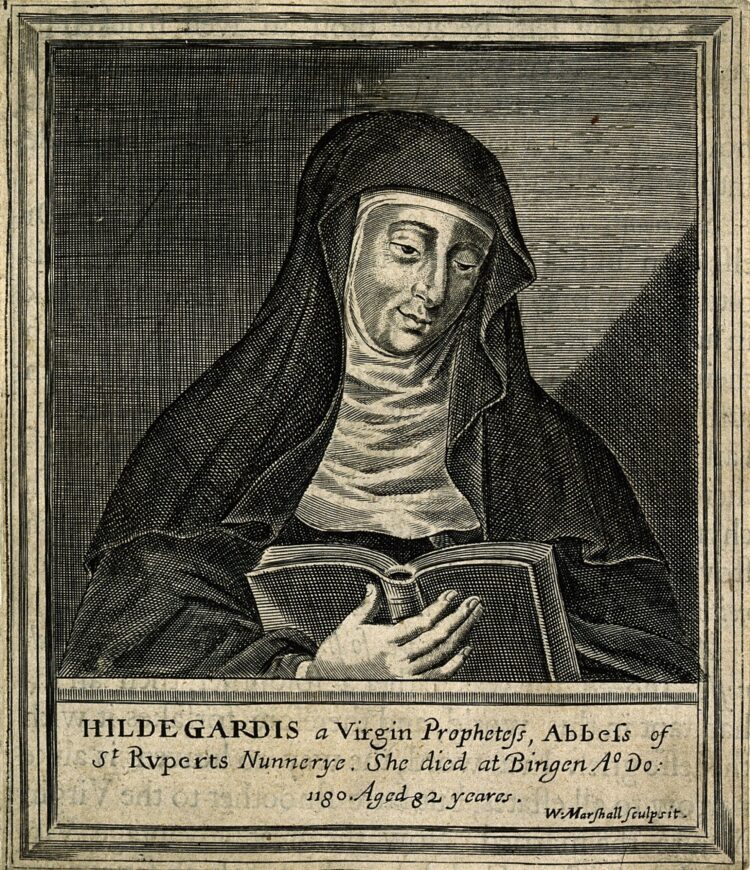It’s Women’s History Month. Let’s celebrate phenomenal women.
Hildegarde of Bingen. We know of this remarkable woman because she wrote. Born in 1098. Died September 17, 1179 (celebrated as her Feast Day). Hildegard was the tenth child of a free lower noble family in the area of Sponheim, Hunsrück of the Holy Roman Empire (now in Western Germany). She became a writer, composer, philosopher, mystic, visionary, herbalist, preacher and profound “influencer” of her time, with lasting impact.
Hildegard was placed in the care of Jutta, a Count’s daughter, at about age eight and together they were “enclosed” at the monastery in Disibodenberg in 1112, when Hildegard was about 14. Hildegard was not formally educated, but she learned to read and write. She helped treat the sick and gardened, learning herbal medicine and other treatments for common ailments of the time. And she had “visions” where she saw a light and learned God’s will for her. It was this effect that convinced her to write.
Journaling and Letter-writing!
She began journaling her visions. Hildegarde developed a correspondence with many notable people of her era, including popes and political figures. She wrote music, both text and musical notation, and has provided us with the most numerous chants of the Middle Ages, many of which are still performed today. You can find performances of her music on YouTube, e.g., https://www.youtube.com/watch?v=yjIAXI2xkEM .
She wrote a two volume compendium of her medical treatments, many of which are recipes that are to be prepared and eaten or drunk. For a fun excursion into two of her offerings, check out Tasting History: https://www.youtube.com/watch?v=aa1r9O0-PEE.
Working through pain
Although she suffered pain, paralysis at times, and other debilitating illnesses, she felt compelled to write throughout those bad times. In an era when women were devalued, under-educated, and prohibited from much personal choice and professional options, Hildegarde managed to write and preach (prohibited to women) by denigrating herself as a woman and claiming her talents as directly from God sent in her visions. It was a way to cross barriers and open doors for women. She taught many other nuns and is well-regarded through history. (See, e.g., her inclusion in Judy Chicago’s “The Dinner Party” art installation. https://www.brooklynmuseum.org/opencollection/objects/166084 .)
May Hildegarde’s story inspire each of us to keep writing.

